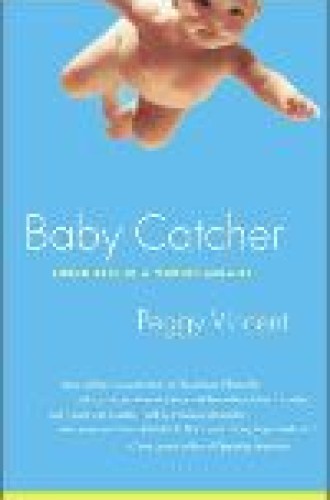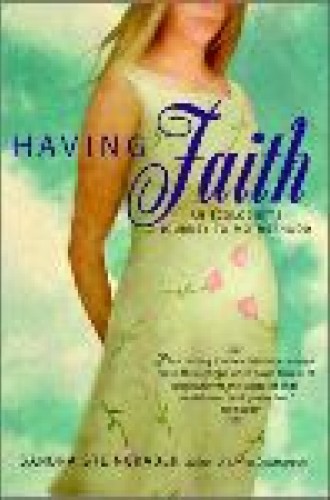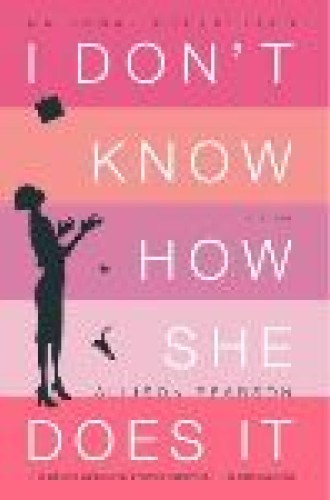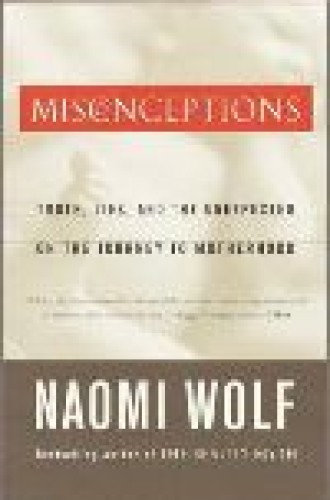Intruder in my arms
When I last delved into the culture of pregnancy and motherhood some 20 years ago, Americans were engaged in a widespread critique of the medical establishment. Women were rejecting a passive role in childbirth and affirming the value of women’s instincts and collective wisdom. They challenged routine procedures such as the episiotomy, the use of pain-killing drugs, and the use of forceps, which sometimes resulted in damage to the newborn.
This was the era of the natural childbirth movement. Some babies were born at home, and some under water with strains of Bach in the background. The father became an important partner in the birth process, joining the mom for training in Lamaze, for lessons in breastfeeding (La Leche League), and then in the delivery room.
Peggy Vincent was one of the childbirth revolutionaries. Trained as a nurse in the 1960s, she decided to become a midwife after watching a women in labor resist painkillers and bed confinement until both were pressed on her by hospital staff.
Clad in her Birkenstocks and traveling around Berkeley, California, in her VW bug, Vincent shared the humor and tears of childbirth with lesbians, unmarried teens, Hare Krishnas, prostitutes and Christian Scientists. She tells the sometimes graphic stories of those births in Baby Catcher, defending along the way the expertise and intuition that midwives bring to pregnancy and childbirth.
After the ferment of the ’70s, one might assume that women would no longer defer to technology or doctors, but would trust their own choices and instincts. From now on, medical “advances” would be evaluated by enlightened moms, dads and doctors, who together would decide on the mother and child’s best interests. Right?
Wrong. It appears not all is well in America’s obstetric clinics, nor with the women who frequent them. A bevy of books on pregnancy, delivery and motherhood chronicle the current generation’s dismay, frustration and loneliness. Consider the titles: The Hidden Feelings of Motherhood: Coping with Stress, Depression and Burnout; The Mask of Motherhood: How Becoming a Mother Changes Everything and Why We Pretend it Doesn’t; and Life After Birth: What Even Your Friends Won’t Tell You About Motherhood.
The consistent theme among these authors is that they were unprepared for the challenges of pregnancy and motherhood. They did not expect the pain of labor, the frustration and humiliation of fertility procedures, the trauma of Cesarean surgery, the loss of their independence—or all of the above. These women seem to have great advantages when compared to women of previous generations or Third World countries or U.S. inner cities—access to the best medical help, committed husbands or partners, advanced educations, good health and economic comforts. Yet they are unhappy, shell-shocked and angry.
Naomi Wolf interviewed moms about their birth experiences and quotes them throughout her book, Misconceptions: Truth, Lies and the Unexpected on the Journey to Motherhood.
“We should have been told [how bad it would be].”
“No one prepared me . . . for the pain, for a forced march of exhaustion . . . for the fact that nothing happened the way I had hoped in the hospital . . .”
“I wish someone could have let me know I would lose my self in the process of becoming a mother . . .”
Why is motherhood such a nasty surprise? Where does the deception come from—and who is to blame? Almost everyone, according to Wolf. A popular guest on radio and TV talk shows, she is known for her flamboyant critiques of American society, such as The Beauty Myth, an attack on the standards of beauty imposed on women.
In Misconceptions, Wolf assails the myth of the “effortlessly ever-giving mother.” She warns that the myth keeps women “from negotiating what they need from their partners and society in order to mother well.” When they can’t get this help, mothers “sacrifice themselves in the process.” Wolf shoots darts at those who’ve contributed to the myth: a book on pregnancy and childbirth, men who don’t share in the responsibility and sacrifices, and “culture” in general.
Wolf performs one service in this otherwise blustery and egocentric book: she alerts us to dangerous trends in the obstetrical business. In the well-heeled urban clinics like the one that Wolf and her husband chose, she is surprised to find none of the innovations of the ’70s. There are no midwives assisting, no birthing chairs and no soft lights. Epidurals and episiotomies are standard fare again. Fetal monitors—the belts that were criticized for restricting the movement of the laboring mother—are back not for the baby’s safety, but because they protect doctors from lawsuits. It would seem that while medical facilities are offering state-of-the-art technology and efficiency, they are again doing so at the expense of the mother and child’s well-being.
Another alarming fact is the large number of Cesarean births. The overall rate in the U.S. is one in four, but in some private hospitals it is close to one in two. Wolf contends that doctors and hospitals make more money on Cesareans, and that they are geared for high-tech deliveries, not for providing hands-on assistance in natural childbirth.
While she places responsibility for this crisis on the professionals and institutions, Wolf admits that some women are choosing Cesarean delivery. They see it—a major misconception—as more convenient than natural labor, or less painful, or less messy. Other physicians are struggling to alert women to the seriousness of the surgery.
Unfortunately, Wolf also shares her own experience in this book, and her self-absorption weakens her critique. Though Wolf bewails the retreat from natural childbirth, for example, she also admits that she and her husband didn’t explore natural childbirth for themselves because they weren’t up to its “extreme requirements of courage and faith.” It’s unpersuasive to hear Wolf bemoan the extinction of a movement that she can’t support personally.
Wolf’s tale of becoming a mom is full of herself (her husband is seldom mentioned) and the disappointments of pregnancy. She suffers severe morning sickness. She is embarrassed in exercise class by her awkwardness and extra weight. She finds Lamaze classes silly and degrading. Her colleagues are condescending. Wolf sees herself cast down from her fulfilling and stimulating life as author and media personality to the low echelon of mommiehood.
After a traumatic and unexpected Cesarean, Wolf, husband and healthy daughter move to the suburbs, where she is dismayed by her sudden isolation. Because she doesn’t drive, she meets only other “displaced” moms in the subdivision, most of them also devastated by the loss of their professional lives and weary from the adjustment to parenthood. Many are in postpartum depression. And their husbands, with the privilege of leaving each day to pursue their professions without interruption, are becoming outsiders.
Wolf relies on one advice book, then blames it for faulty information. Aren’t there any books that offer straight information about Cesarians, about adjusting to a baby, about the challenges a baby places on marriage? (I found a list online at Mothering magazine, the heir to the natural childbirth movement.) Were there no family members to share experiences and guide Wolf through hers? Did she really not expect any dramatic changes in her life?
The chief value of Misconceptions is not as an indictment of the medical establishment, the workplace or the culture, as Wolf supposes, but as an inadvertent but arresting report on the fragile state of the families being formed by young professionals. While they have been able to achieve much in a professional world, which supplies a social life as well as career, they seem not to have developed the capacities for family life. They seem never to have learned about sewing, gardening, cooking or puttering—the “soft” activities that can make home a comfortable and welcome place instead of a prison of isolation. They may have prepared the occasional gourmet meal for 12, and can find the best price for a Club Med vacation, but they have never prepared three meals a day, or abandoned the gym for walks through the neighborhood. Without a habit of being at home, the mayhem of a toddler lunchtime or the tedium of a rainy day makes a day at work look like rescue—while home is only a punishment.
Allison Pearson gives the stressed-out modern family a farcical spin in How Does She Do It? The heroine of the novel, Kate Reddy, is a savvy 35-year-old hedge-fund manager who is also trying to manage the “complications” of a husband and two small children. Kate can outsell her peers at work, but at home she hides in the bathroom to avoid facing her one-year-old’s tears when she leaves on another business trip.
Pearson, wife of New Yorker film critic Anthony Lane, seems to have conceived How Does She Do It? with a movie in mind, and sure enough, Miramax films has bought the rights to the script. Kate is the A-track twin of Bridget Jones: more organized, more sophisticated and more nearly crazy. As the book opens, Kate is in the kitchen in the middle of the night, intentionally “distressing” store-bought mincemeat pies with a rolling pin. Her weary husband—from a safe distance—asks why. To make them look homemade for the bake sale at her daughter’s school, she retorts. It’s a fine moment, and there are lots of these in the book.
Kate should be played by an actress who can do justice to a leather jacket, pencil skirt and gel-and-go haircut. But behind the scenes, Kate wears not sexy lingerie but a “Gap XXXL T-shirt with a dachshund motif.” She mutters that her generation of women has gone from “sex but no work” to “work and no sex.” Her relationship with her husband consists of him watching as she races in or out of the house, and tolerating, at least for the moment, her barbed criticism of his domestic efforts. Kate is witty, competent and conscientious, but she’s also a Barbie doll run amuck, a fantasy of a woman who is “doing it all” and losing it all.
I savored Kate’s humorous one-liners, because behind them were sharp insights into parenting, marriage and women’s professional lives. Kate knows what she’s missing, and thinks wistfully and wisely about the beauty of her marriage and her family. At the center of her domestic-professional crisis is the same dark reality revealed in Wolf’s book: many families are living in a frantic spin that nourishes no one and threatens to unravel the thin fabric of family.
Like Wolf, Sandra Steingraber is an “older mom” who was well-established in her profession before she had her first child at age 39. Unlike Wolf, Steingraber welcomes the news of her pregnancy wholeheartedly. As an ecologist with a degree in biological research, she is fascinated to watch the adventure of human birth incarnated in her own body.
For Steingraber the natural world is a metaphor, and for the reader, the metaphors build an engaging story of human life. The spreading branches in a maple grove, for example, remind the author of the branches of cells that are sending nutrients and hormones to the human embryo.
She explains each trimester in the life of the embryo by mixing its scientific “biography” with personal memoir, including the downsides of her experience. Steingraber reports on her struggles with morning sickness, on waiting for results of amniocentesis, and on mind-numbing postpartum fatigue:
Faith is the consumer, and I am the consumed. We sit down to breastfeed, and the world disappears, just out of reach. The newspaper sits unread, inches away, but I cannot quite reach it. As soon as the [milk] let-down hits, my mouth turns to ashes. The glass of water, too, is just out of reach. I call for Jeff, but he is down in the basement doing laundry. I now have tendonitis in my wrists from holding the baby to my breast. . . . There are supposed to be solutions for these kinds of problems, but the books . . . are . . . on the shelf. Just out of reach. The tea kettle starts its insane whistling, and there is nothing I can do about it. The phone rings . . . I haven’t taken a shower . . .
The complaints are tempered by her biologist’s curiosity, and the mix of memoir and scientific observation works. Her personal observations are sharp and literate; they keep a biological discourse from drifting into textbook monotony. Moms will identify, for example, with her well-remembered description of childbirthing pain.
Perhaps most significant about her book is that whereas other writers focus on what happened to them in their transition to motherhood, Steingraber focuses on what’s happening to the baby, not only biologically but environmentally. She considers critical issues of polluted water and air, and their effect on a fetus. She looks up the chemical content of drinking water and checks on the effects of lead paint (her husband is a house painter and artist). She examines the hazards of living with agricultural pesticides. None of what she learns is good news. Our society is stealthily poisoning its own offspring.
Steingraber cites the disasters of thalidomide in the U.S. and methyl mercury in Japan (Minamata), and presses for a zero tolerance of all environmental contaminants. “If our goal is to protect human embryos, we cannot afford to wait until we understand everything about how a chemical might inflict its damage.” But that is exactly what we are doing with PAHs (carcinogens), which undermine fetal growth; with PCBs, which may trigger early labor; and with POPS (persistent organic pollutants), which pollute mother’s breast milk.
Should we feed our babies “chemically contaminated, yet clearly superior, breast milk or chemically uncontaminated, yet clearly inferior, formula”? She endorses breast milk, but pleads for constraints on chemicals.
We are inclined to listen to Steingraber because she also makes us laugh at the hard times in pregnancy, childbirth and parenting. We listen because she’s endlessly curious about life around her, and because she holds sacred the bonds between herself, her husband and their child. Above all, we listen because she can articulate the depth of her joy for the gift of Faith’s life, even at 2 a.m.:
Faith stares, mesmerized, at the nighttime sky.“Moon sleeping?” she asks.
Yes, I say quickly.
“Frogs sleeping?” she asks.
Let’s say yes.
“Rain sleeping?”
Yes, I suppose it is.
And then she lays her head on my shoulder and falls fast asleep.
I have never felt more surprised, more humbled, more blessed, more sad, more happy, more in love. Wide awake, I lean against the door and slide slowly down into a sitting position, watching the night’s carnival, waiting, amazed, for the sun to rise.









